8 Day Rockhounding & Mineral Collecting in the Santa Teresa Mountains, AZ (Nov 2022)
Rockhounding & Mineral Collecting in the Santa Teresa Mountains, AZ – Nov 2022
Trip Overview
This is an 8-day solo rockhounding and mineral collecting trip in the Santa Teresa Mountains, SE Arizona. This trip took place in mid November, 2022. I’ll be using my Chevy Astro Camper Van as my home base, and do a series of 7ish-mile day hikes to various abandoned mines. I’ll also do an overnight hike to one of the mines and sleep in the tunnel. This is a beautiful and remote mountain range with the opportunity to find some interesting, beautiful and rare minerals!
Disclaimer
Rockhounding and mineral collecting requires that you research public/private land access, existing mining claims, etc. Many old mines and claims are abandoned, and you must use your judgement whether or not it’s safe and legal to access. The author shall in no way be liable for any use, misuse or omission of information presented here in this guide.
Santa Teresa Mountains Arizona Rockhounding Map
About The Area
The Santa Teresa Mountains are located within the Coronado National Forest and partially within the San Carlos Apache Indian Reservation, in Graham County, Arizona. My trip will take place just a few miles from Klondyke, a small populated place in Aravaipa Canyon. It was founded around 1900 by a group of miners, who recently returned from the Klondike Gold Rush in Alaska. They decided to name the town “Klondyke”, with a Y. Today there are only a few people living in the area. The Klondyke Country Store & Lodge is supposedly open, but in the four times I’ve driven by in multiple visits to the area now, I haven’t seen open. The Grand Enchantment Trail runs right through this area, and hikers DO use the store in Klondyke as a resupply, so you’d probably have better luck catching them open if you make prior arrangements.
Day 1: Arrive At Camp in Santa Teresa Mountains
Getting into the Santa Teresa Mountains takes some time. I approached from Safford. From US-70 near Eden, take Klondyke Rd west for 25 miles. It’s a dirt road that’s in great shape, you can drive 50 if you want to. This dead ends at a T junction in Aravaipa Canyon. Go right (Northwest). Technically this is still called Klondyke Rd here through Aravaipa Canyon. This dirt road is also in great shape. Take this 10 miles. There will be two roads on your right within a few hundred feet of each other, both with closed gates, right before you reach a cattle guard. The first gate says private property (debatable), but the second gate says nothing. The map shows BLM land here on the second gate, so your good to go. The first gate has private property on ONE side of the road, BLM land on the other. I don’t think the property owner has a right to keep people off that road since he only “owns” half.
Now this Forest Service road gets rougher. I drive 1 mile to a spot where I camp, and trust me, it’s nothing special. But it’s a home base and one that’s reachable without a high clearance 4×4. I had to do a little road maintenance on my last visit, using my shovel to bridge the gap in a washed out section of road. You may have to do the same.
I camped at this spot last winter on my first visit to the Santa Teresa Mountains. My van camper requires almost nothing to “make camp”, so right after I parked, I load up my backpack, grabbed my bucket and headed up the canyon to explore with the last remaining hour plus of daylight.
The dirt road turns and heads up over a ridge, and now it’s a walk through the wash up the canyon. I don’t usually have a ton of luck finding good rock and mineral specimens in washes like this one, but if nothing else, it’s a great time of the day to be hiking through an increasingly beautiful canyon. Suddenly, it narrows. I head up a short ways, but turn around as the daylight is fading fast. I see no interesting rocks or minerals along the way tonight, but it was still worth exploring. Tomorrow will be different!
Day 2: Overnight Hike to Laurel Canyon, Grand Reef Mine
Mines Visited: Grand Reef mine
The Grand Reef Mine is a former underground Pb-Cu-Ag-Zn-Au-Mo-V-Baryte-Fluorspar-Silica mine located in Laurel Canyon, 4.6 miles SSE of Aravaipa, and about 4 road miles NE of Klondyke in the Santa Teresa Mountains, Graham County, Arizona.
It was a cold night, perhaps upper 20s. I warm up, eat breakfast and pack up for an overnight trip to the Grand Reef Mine. I’ve never done an overnight mining trip before, so I bought a new backpack just for this kind of thing. It’s a no-name cheapo backpack, but it was one of the few bags I could find that had everything I was looking for: bottom compartment for sleeping bag (will put rock/mineral finds here), heavy duty material (not thin ultralight materials), and cheap price. It was about about $85 for the 60L. I’ll carry my tools in a separate bag that I strap to the top of the backpack, carry my tent/sleeping bag/food etc in the main compartment, and have some small tubs, boxes and bags in the bottom compartment which I hope to fill with minerals later on.
It’s about 4 miles each way to the Grand Reef Mine from my location, and some of this is off-trail. Leaving camp, I set out towards a canyon that quickly narrows into a slot. I shimmy my way up it to keep moving up, and eventually get past it. I find a nice quartz crystal point, about the size of my thumbnail. Weathered, but a good sign. Saw a lot of these last winter on my previous visit, would love to find where they are coming from.
My route takes me up and over a series of ridges and drainages before reaching a dirt road. This dirt road is part of the Grand Enchantment Trail, a 770-mile hiking route from Phoenix to Albuquerque. A route that I would love to hike myself someday. But today, I’m here for the minerals. Along this road, and the nearby ridges, I found some more quartz points, more weathered than the last ones. I also found a thumb sized quartz crystal in an exposed vug in a boulder along this road on my hike up. Last winter, I found a quartz point on the ground near here almost the size of my hand! The views are also excellent, looking northeast to the Santa Teresa Mountains ridgeline.
I follow the road up past the point where there’s a faint path that leads downhill to the Grand Reef Mine. I keep going a little farther to another mine shaft and tunnel that’s marked on the map, perhaps 1/3 mile north of the Grand Reef Mine. It’s very steep here, but I follow the slopes downhill to the point where the shaft and tunnel are marked. I see neither a shaft or a tunnel, merely a few small prospecting pits with almost nothing of interest. Ah well, it was worth checking.
After a steep descent, I’m down to the bottom of Laurel Canyon. It was a beautiful hike with many obstacles. I found several large pools of water, some big enough to do a cannon ball into. There were many wasps about, likely commuting from the massive nest at the Grand Reef Mine, just down the canyon. I saw this on my visit last winter.
Next I came across some copper deposit staining of the rock along the creek bed. I stop here for 20 minutes to chip away at the blue/green coloring but find nothing warranting a continued effort.

It’s a 60ft drop down this mostly dry waterfall, but there is a trickle of water complicating the climb
Eventually I reach a point in the canyon where I find myself along the upper edges of a bowl with a 60ft drop. The terrain above the bowl is very steep, thick and thorny. On the other side of the bowl, I thought I saw a weakness in the rock that I could climb down. So that’s where I headed. I bushwhacked across the top of the bowl for a solid 20 minutes, and nearly stepped on a rattlesnake. Eventually, I reached my chute, climbed down and reached the bottom. That was a pain, but also pretty fun.
Finally, I come to the “end” of the narrow canyon section as I reach the reef. Besides the information written about the Grand Reef Mine on Mindat, I couldn’t find any information online about the geology of the area. Presumably, the mine’s name is a reference to an ancient reef here in the area, which has been uplifted. Imagine a flat section of the Earth that is tiled 90 degrees, towards the sky. The site is marked by a vertical outcrop of rock, running perpendicular across Laurel Canyon. Mindat makes a reference to the Grand Reef Fault and block faulting trending NNW.
On my visit to this mine last winter, the rough 8 mile round trip hike took a decent chunk of the daylight and I wasn’t left with enough time to really hound these tailings. This time, I’ll camp here for the night, and hike back to my van tomorrow. From the bottom of Laurel Canyon, looking up at the “reef”, you’ll notice a tunnel about 25ft up. About 20ft into the tunnel, there’s a locked gate preventing further entry. I dropped my stuff here in the tunnel, where the ground looks clear enough for my tent, and the tunnel appears to be just barely wide enough.
Next I grab my bucket and head up the VERY steep slope of tailings to get to the main collecting area. I do NOT recommend doing this. There’s a “road” leading up to the mine, or there was. It’s much easier to find coming down. If you want to find it going up, walk down Laurel Canyon a short ways, past the mine tailings, and take one of the ravines on your right uphill. The road is completely gone at the bottom, washed out and overgrown, but it’s better than the tailings pile. Only near the top will the road become more obvious.
At the top of the tailings pile, you’ll see a large open shaft that’s fenced off. Around the edges of this shaft is the main collecting area. As of 2022, there is a MASSIVE wasp nest about 75ft above the top of the mine shaft. The size of this nest could be roughly that of a small car. This is the nest I eluded to when I was hiking down Laurel Canyon earlier. The wasps can be heard nonstop buzzing overhead as they travel to the water in the canyon. They have not been a problem for me, but it’s worth the mention.
It won’t take long before you find your first pieces of linarite. The deep blue color of this mineral will easily catch your eye, but the challenge is finding worthy specimens to keep. I found most of my specimens by turning over piles of rocks and boulders, and digging small holes. The best material likely came from the various levels of the mine, and with no access to those, all that can be done is pick through the tailings. Hard rock mining can be done on the walls of the reef, I have not gone this route here.
Along with the blue Linarite, you’ll find lots of green Brochantite. Malachite and Chrysocolla don’t seem very prominent here at all, the typical source of greens and blues at many Arizona copper mines. Caledonite is another blue mineral you may find at the Grand Reef Mine. Some really nice specimens of Caledonite have been found here in the past, but I did not find any nice crystals. Instead, I found a nice drusy piece of Caledonite, or perhaps, Chrysocolla.

Found this BIG quartz point on the hike to the Grand Reef Mine. There are some really big crystals here, would love to find them before they get this weathered!
Some nice quartz crystals can also be found here. Nothing like the large sizes I found in the washes on on the ridges on the hike to the mine, but the quartz here can take on some interesting looks. For example, I found a really nice bed of quartz crystals, with a golden bronze staining. And another plate of quartz crystals that have a coating of black and light blue minerals.
There are a lot of interesting minerals to find here, but it is apparent that it’s been pretty picked over throughout the years. After several hours of collecting, I found some nice pieces, but not as nice as I was hoping for when it comes to Linarite. Same as my last trip. Trust me, I am NOT complaining. But it’s clear the highest quality specimens are gone now or are just few and far between.
With sunset approaching, I head down the old road, bushwhack my way down to the bottom of Laurel Canyon, and over to the mine tunnel. I set up my tent with the last remaining bits of daylight and settle in for a long night. A constant breeze through the old tunnel makes my tent flap in the wind all night. But after a hard day, I’m ready to rest.
Minerals I Found at the Grand Reef Mine, Day1
- Brochantite
- Linarite
- Quartz
- Galena
- Fluorite
- Caledonite?
Day 3: Leave Grand Reef Mine, Look For Dog Water Mine, Return to Van Camp
Mines Visited: Grand Reef mine, Dog Water Mine
It took a long time for the sunlight to reach the canyon this morning, and with nearly freezing temps, I stay in my tent until about 9am. Once that sunlight pours into the tunnel, I’m motivated to eat breakfast and head back over to the tailings.
This morning, I’ll hound the bottom of the tailings pile, instead of climbing up to the top again. Fluorite can also be found at the Grand Reef Mine. There’s some nice green fluorite pieces to be found, as well as some more gemmy purple fluorite. I found a few nice purple fluorite octahedrons on a matrix of quartz crystals, a great find for me. Score! I found the nice purple fluorite pretty close to the entrance of the tunnel. The green fluorite was mostly up top near the mine shaft entrance.
After a couple hours of leisurely mineral collecting, I pack up and begin the hike down Laurel Canyon. I’ll take a different route back than I took yesterday. There’s a halfway decent 4×4 road running down the canyon, in better shape in some places than others. There’s no public access to this canyon, since private property blocks it a few miles down the canyon. Likely the only use this road, this canyon, ever sees is from the local rancher down the canyon.
About a mile down Laurel Canyon, I reach the junction for Waterfall Canyon to the east. I follow this road a half mile or so in search of the Dog Water Mine. Supposedly there Wulfenite to be found here. However, when I reached the general area of the mine, I could only see some small workings on the hillside above. And from the road, it’d be a bushwhack through a ton of thorn bushes on a steep slope. I’m already pretty cut up from bushwhacking yesterday in Laurel Canyon, so I opted to skip this one. I keep forgetting to bring a pair of hand shears for working through the thorn bushes.
I headed back down the dirt road, back down Laurel Canyon and reach fence line around the private ranch. I follow the fence line up hill and over the first ridge, cross the road I came in on, and continue hiking west across a series of ridges and washes. Lots of thorn bushes, cow activity and a general pain in the ass.
It was mid afternoon when I made it back to my van. This is always a great feeling, to return to the relative comfort of camp at the end of a long day of mining. Or in this case, two days of mining and hiking. I dropped my pack, cracked a beer and began to wash off the accumulated dirt and filth with my limited water supply.
After cleaning myself up, it’s time to wash my rock and mineral finds. I always like this part of rockhounding, where you can really see what your finds look like cleaned up. I just use a bucket of water and a toothbrush for most minerals, at least when I’m out in the field. Some are too fragile to risk the toothbrush though, so be wary of that. I try to wash the bulk of the dirt off these pieces before storing them. I’ll let them sit in the sun and dry off, then bust out the loupe and have a closer look. So satisfying.
While washing my minerals, a group of cows walked through my campsite. They stopped about 20ft away, and stayed there for about 20 minutes trying to figure out what to do. I just carried on scrubbing my rocks and drinking my beer. Cheers!
Minerals I Found at the Grand Reef Mine, Day 2
- Brochantite
- Linarite
- Quartz
- Galena
- Fluorite
Day 4: 7-mile Day Hike to Tenstrike Mine
Mines Visited: Tenstrike Mine
The Tenstrike Mine is a small former surface and underground Pb-Zn-Cu-Au-Ag-V mine located 3.9 miles SSE of Aravaipa, 3 km N of NNW of the Grand Reef Mine on the western slope of the Santa Teresa Mts.
Today, I’ll do a day hike to the Tenstrike Mine and return back to my camper van this evening. This will be about 7 miles and 1400ft elevation gain, mostly on a dirt road.
After leaving camp, the road climbs out of the wash and up onto a mesa-like ridgeline. Good views of the Santa Teresa Mountains and Aravaipa Canyon. As I neared the Tenstrike Mine, a fighter jet screams over the mountains above me, perhaps 1,000ft above the terrain. He dips down into Aravaipa Canyon, banks hard and cuts back up over the Santa Teresa Mountains, a few hundred feet above the terrain. That was super cool to see. I had been hearing the jets the last few days, and even a couple of sonic booms.
The Tenstrike Mine is a series of workings along a ravine. At the very top is an old mineshaft, collapsed and filled with dirt. This mine is supposed to yield some nice specimens of purple fluorite or quartz, and I’m not seeing anything like that up here. In the nearby wash, there’s a vein of quartz crystals embedded in the dirt along the banks. I see a few crystals on the ground and spend some time working at the vein. I pull out a few plates of quartz crystals, but nothing really exciting. I’m hoping to find them in either larger size, or with some fluorite, but after tracing the vein I’m not seeing that.
Next, I head down the ravine. Lots of evidence of mine workings here, but again, nothing too interesting to be found. There’s some larger boulders here and there with quartz veins though to at least tell me there’s something nearby.
My map marks several prospects and tunnels as I continue downhill. There are three tunnels marked on the USGS maps, and I had the most success at the northernmost one. I wanted to go into the tunnel to explore it, but there were swarms of thousands of flies inside and I turned back.
No matter, there was some great collecting to be had on the tailings pile outside of the mine tunnel. I didn’t have time to climb to the very top of the hill, but on the slopes 50ft above the tunnel, there were many outcrops of rock that were just littered with cavities and vugs, with quartz and fluorite inside. The problem is, this is hard rock mining. A saw would be great, if not, a drill so you can create weaknesses in the rock when chiseling around the piece you’re looking to extract. Without these tools, it’s best to just collect on the ground, in the piles of existing rocks and boulders. It’s worth breaking some open though.
I found many nice pieces of Fluorite octahedrons here, usually on quartz. The Fluorite here may not have the shiny gem luster we’re all after, as they often have a bit of a rough, pitted kind of texture, but they are still nice pieces with some deep purple color that are highly attractive in their own way. As a somewhat new collector, I found my best Fluorite specimen to date here.
It was getting late in the afternoon, but I wanted to hit up the other tunnels in the area that make up the Tenstrike Mine. I didn’t see much that interested me at these other locations. I would definitely have a second look at the area though on a subsequent visit, because I kinda rushed through the area.
I followed the unnamed canyon uphill and back to benchmark 4468, where I rejoined the road I hiked in on this morning. This is my favorite time of day to be hiking, late in the day with the sun low in the sky. Today was no exception. I walked back with the sun on my face and a bag full of some great Fluorite specimens. I knew the Grand Reef Mine had some great minerals, but my expectations for the rest of this trip were not as high. So far, so good!
Back at the van, I cracked another celebratory beer and washed up myself and my day’s mineral finds. When the sun goes down, I eat dinner and watch a movie in the van. My body aches from the last few days of hiking and mining, but damn does it feel good to lay my head down at the end of the day. Especially, knowing I get to do it all over again tomorrow.
Minerals I Found at the Tenstrike Mine
- Quartz
- Fluorite
- Galena
Day 5: Move Camp Near Aravaipa Ghost Town. Day Hike to Lead King Mine
Mines Visited: Lead King Mine
The campsite I’ve spent the last 4 nights at gave me great access to the Grand Reef Mine and Tenstrike Mine. Today, I’ll move camp to another location, so I can do some day hikes from there to a few more mines.
I drive back down to Klondyke Rd, then a mile west and take a right (north) on Aravaipa Town Rd. Pass through a gate to enter some newly designated public lands and continue heading uphill. The road was surprisingly good most of the way. In fact, it was only the last mile or so where the road became more challenging. The main issue was some large berms in the road, either built to channel flowing water or in the process of an old flash flood that was never cleared out. Either way, these are large bumps in the road that my van bottomed out on a few times. Thankfully, contact with the ground was made only with the frame and not the oil pan or anything. There was a Cat parked along the road a few mile in, and it looked like some grading had been done and is perhaps currently in progress. So maybe, they will make it up to these large bumps and take care of them. Any high clearance truck with have no issues.
From Klondyke Rd, It was 6.6 miles to a saddle where there’s a road junction and a sign that says Aravaipa Townsite 1 mile. I just parked here at this junction and it made for a great home base. And, I actually had cell service here with 4g signal! A first for this area, I had nothing just a few air miles away.
Fortunately I don’t have to do practically anything to “set up camp” when I arrive in my van, so after parking I grabbed my backpack and bucket, and headed out to do a day hike to the Lead King Mine. It’s located on the north side of Imperial mountain, at the junction of Stowe Canyon and Tule Canyon. It’s about 1800ft away as the crow flies, but to avoid bushwhacking down the steep canyon slopes, I’ll take a 1.75 mile route each way along some dirt rods.
The last half mile or so, the road fades away and becomes extremely overgrown with thorn bushes. I lose the road and drop down into a wash, where some light scrambling is needed to get down. But soon, I’m there, at the base of the mine.
Now, I mistakenly set out to this mine thinking it was the nearby Tule Mine, which was supposed to have some really nice Fluorite. realized something was maybe not right when I saw no evidence of Fluorite here. In fact, I didn’t see too much of interest laying around in the tailings piles. So, I had a look inside the tunnel next.
Upon entering the mine tunnel, I was once again greeted by a swarm of thousands of flies. I was bummed to turn back last time, only for flies. After all, the are completely harmless, just annoying. So, I pushed in anyways, displacing the flies as I entered. And luckily, they wanted little to do with me, and pretty much just left me alone, vacating the area. I’ll take it.
The mine tunnel are in good condition and stable. Inside, I find some interesting minerals and veins. Firstly, I notice the bright green fluorite veins in a few areas. Not the gemmy stuff I’m after, but a really nice color nonetheless.
I do see some lead deposits amongst the walls, along with specular Hematite, and Pyrite. Then, I notice a white mineral coating on one section of hematite. Upon closer inspection, the mineral is a series of very fine, thin bladed crystals, in a puffy fan-like configuration. I don’t have much info on this mine saved on my phone, so I’ll bag a sample and take it with me. I’m pretty sure it’s rare, that’s all I know at the moment.
I spend some time removing a chunk of hematite with the previously mentioned white mineral, and realize this section of the mine has less oxygen than I’d like. Work is much harder here, despite not being all that far from the mine entrance. I bag my sample and move back to the main shaft, and enjoy the invigorating feeling of oxygen once again.
It’s late in the day now and it’s time to walk back uphill and try to find the old road again. I fight the thorn bushes and get back to the better dirt road, and life gets a little easier again. Excellent views of Imperial Mountain at sunset, perhaps best viewed from my campsite.
Back at the van, I don’t really have any minerals that require cleaning today. But with some phone service and a little research, I surmise that my mystery white mineral is Laurelite. The nearby Grand Reef Mine is the Type Locality for Laurelite, having being first identified there. And there are other recorded Laurelite occurrences in the Aravaipa Mining District. This is a pretty rare mineral, perhaps more rare than I first suspected. I carefully transported this piece on the way back, protecting the delicate crystals as best I could, and I believe I have a pretty nice specimen to show for it. It may not have the instant wow-factor of those beautiful Fluorite octahedrons I found the other day, but finding a mineral as rare as Laurelite has it’s own rewards. I never even found the Tule mine, which was my original intention when I set out this afternoon, but I’m sure glad I stumbled upon this mine.
Another noteworthy find from the Lead King Mine was this quartz/hematite combo. Not a spectacular piece, but an interesting one. Another good day.
Minerals I Found at the Lead King Mine
- Fluorite
- Pyrite
- Hematite
- Quartz
- Laurelite (my best guess)
Day 6: Ben Hur Mine, Small Prospecting Pits
Mines Visited: Unnamed Cu Prospects, Ben Hur Mine
Today was my lazy day. It was cold and windy, and I decided to stay closer to the van today.
Across the dirt road I’m parked along, about 40ft off, were a couple of prospect pits. This unnamed Cu Prospect is shown a few hundred feet down below in the canyon, and perhaps, part of the same workings. I didn’t follow the tailings too far downhill. In either case, these turned out to have some moderately interesting material.
Inside the pits, I didn’t see anything in the remaining host rock that looked like it was worth digging into, so I spent my time picking through the tailings. The rocks had some really nice greens and blues that drew me in. There was some Chrysocolla and Malachite, and perhaps some sort of mix of the two. This was more of the tumble or slice kind of material though, nothing really of the cabinet specimen quality. However, there were some pieces of Smithsonite that would have been decent if not damaged.
Next, I wandered down the road towards Aravaipa ghost town. It’s only a mile, but I never made it to the townsite on this trip. I spent some time poking around at a few prospecting pits alongside the road and over to the Ben Hur Mine. This one was pretty devoid of anything interesting, but that’s to be expected being so close to a “main road” like this.
On my very short walk back to the van, I did manage to find a couple of chunks of a lead/zinc ore with some nice green color to it. Nothing crystalized, but it was a dense chunk of more mineralized ore that was left behind. Perhaps a window into the kind of stuff once found here. But today, slim pickings.
Minerals I Found At the Ben Hur Mine & Unnamed Prospects
- Smithsonite
- Chrysocolla
- Malachite
- Quartz
- Hematite
Day 7: 7-mile Day Hike to Iron Cap Mine
Mines Visited: Iron Cap Mine
The Iron Cap Mine is a former surface and underground Pb-Zn-Ag-Cu-Au-Fluorspar mine located 2 miles NE of Aravaipa Ghost Town, ½ mile N of Landsman Camp, and near the head of Arizona Gulch, in the foothills of the Santa Teresa Mountains, at an altitude of approximately 5,000 feet.
Today was a great day of mineral collecting. One of my all time favorites, in fact. But it does take a 7 mile round trip hike to reach from my camp. No matter, this is an easy hike up a relatively good dirt road, so this hike takes just over an hour each way.
About 2/3 the way to the Iron Cap Mine, I pass through Landsman Camp. Nothing remains of the camp today, but a hundred years ago, an eccentric prospector named Frank Landsman called this area home.
Not far up the road from Landsman Camp is the Iron Cap Mine. This mine has many rare and interesting minerals that can be found here among the lead/zinc ores. There’s some old structures and equipment left here, which I spend a moment exploring first. There’s some ore chutes, rails, pumps and motors along the side of the road.
The mine itself is farther uphill. A weathered road leads up to the top, before fading into nothing at the base of the tailings pile. Here is a U shaped valley, and the mine is located inside the “U”.
As I make my way into the main collecting area, I see a mine shaft and small adit tunnel along the wall. I stop here and drop my gear, making this my little home base for the day. There’s lots to grab my interest already, and I quickly become excited about the possibilities. In fact, I already had a handful of rocks as I walked up to this spot. Sphalerite immediately stands out, something I really haven’t seen much of, at least not this green gemmy stuff.
I had all sorts of temporary piles going as I tried to figure out what all of these new-to-me minerals are and which ones are actually worth keeping. I typically take a sample of any new mineral I find with me, even if I know it’s a crappy specimen. Until I find something better, this is what I have! And that’s the fun of mineral collecting. No matter what you have found, there is always a better, or at least equally stunning but different and unique, specimen out there to find.

While most of these Galena cubes are oxidized and have lost their luster, these cubes still make for an attractive mineral arrangement
So, we have lead/zinc ore here in abundance. Veins of it coat the walls of rock here. I pulled off some really nice solid chunks of blocky Galena the size of my head, and broke them down to some smaller pieces to to take with me. Really excellent, blcoky Galena. Also, some cubes of Galena on a matrix of various other rare and interesting minerals. It was truly a wonder to see, for this rather amateur collector.
There are also large blocky chunks of Calcite strewn about in the tailings. I’ve always liked these kind of Calcite pieces on their own, but it’s also a good indicator that other minerals nearby may be “growing big”, too. There are large deposits of Calcite visible in the walls and some other minerals growing along with them. However, much of the surface area of these walls was also covered with a thick white substance. I didn’t mess with it too much, but it appears to be, perhaps, an oxidation effect, a reaction of air with the “newly” exposed, highly mineral rich Lead/Zinc walls.
One of the minerals commonly found here at the Iron Cap Mine, and a new one for me, is Johannsenite. Johannsenite isn’t really a spectacular mineral on it’s own. But, a bed of these green/brown Johannsenite crystals make a cool matrix for other minerals to sit upon. It reminds me of the old retro “puke green” carpets of the 70s, for some reason.
The Iron Cap Mine is also known for a rare mineral called Manganbabintonite. This mineral is very similar to Babingtonite, but has a little more Manganese in the mix. I believe I found one piece with Manganbabingtonite.
I also found Andradite, and a few small pieces of cubic pyrite. This wasn’t as abundant as the other minerals, but there were a few pieces to be found.
Another new mineral find for me is Axinite. I didn’t find any spectacular pieces of it, but I get the impression this is not a very attractive mineral in it’s best form anyways. Still cool to find something new.
Another mineral I found at the Iron Cap Mine is Hedenbergite. At least, that’s what I think it is.
And finally, here’s one of my favorite pieces of the day. It’s combo of Quartz, Calcite, Johannsenite and, well, something else. I originally thought it was Manganbabingtonite, after I got it home I had a closer look under the loupe and discovered the darker mineralis Johannsenite as well. I suspect the original bed of the typical greenish-brown Johannsenite formed, and then later another round of mineralized fluids seeped in that contained a higher concentration of a darker mineral (Iron, Manganese, etc). But being the amateur I am, this is just a guess. Still, a really cool piece.
I stayed at the mine as late as I could, since the collecting was so good. When it was time to leave, I had filled up most of my containers that I use to put my finds in. My bucket was full, I had a full tupperware container, and for the first time in recent memory, I completely filled my padded fishing tackle divider box thing. That’s how you know you had a good day.
About a mile before camp, I ran into some lazy cows on the road. It’s a steep drop on one side, and a steep hillside to climb on the other, so I pretty much herded the cows down the road all the way back to my van.
List of Minerals I Found at the Iron Cap Mine
- Axinite
- Sphalerite
- Johannsenite
- Calcite
- Quartz
- Galena
- Zinc
- Hedenbergite
- Pyrite
- Manganbabingtonite
- Andradite
Day 8: On to the Next Adventure
After spending my final night in the Santa Teresa Mountains, I headed down Aravaipa Town Rd towards Klondyke Rd. This has been one of my favorite mining trips of all time! Not only some rare, beautiful and interesting minerals to add to my collection, but some beautiful mountain and canyon scenery, some good hikes and lots of adventure. I couldn’t ask for more and I can’t wait to get back to the Santa Teresa Mountains again in the future!
For now, I’m headed into Phoenix to stay with a friend for a few days, plan my next move, and head out into the desert again. Stay tuned for the next adventure!
Interested in purchasing any of these mineral specimens?
Many of my rock and mineral finds are available for purchase. Contact me at if you’re interested in buying any of the minerals you see in this post.





























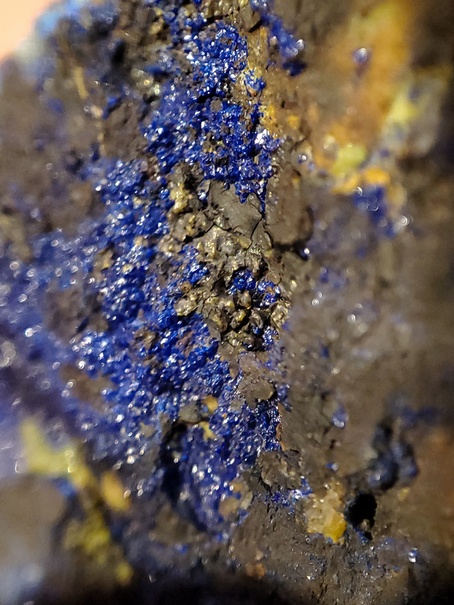








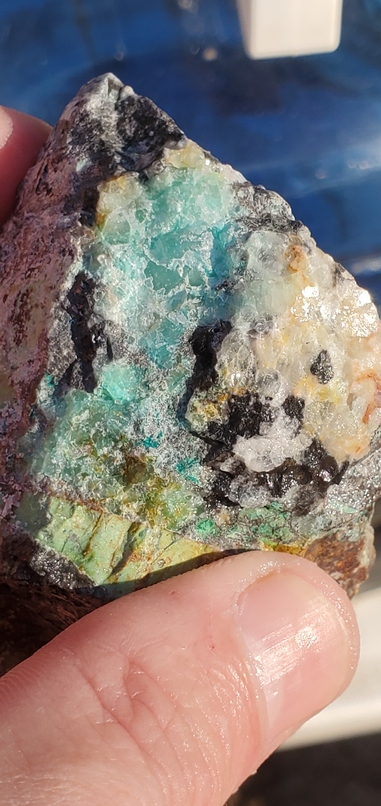













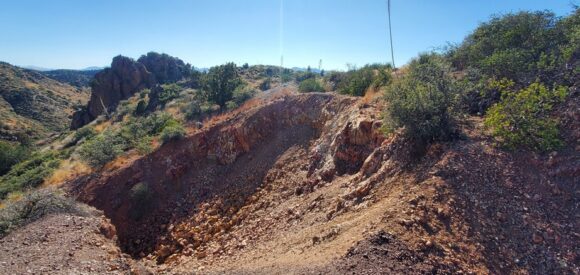







































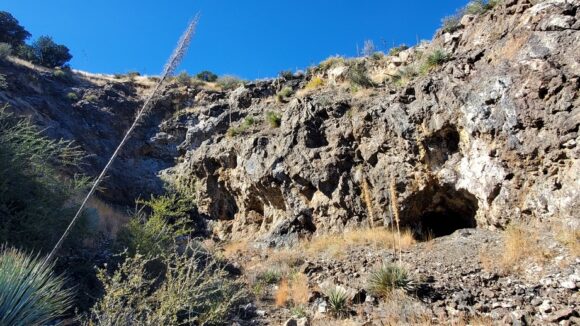











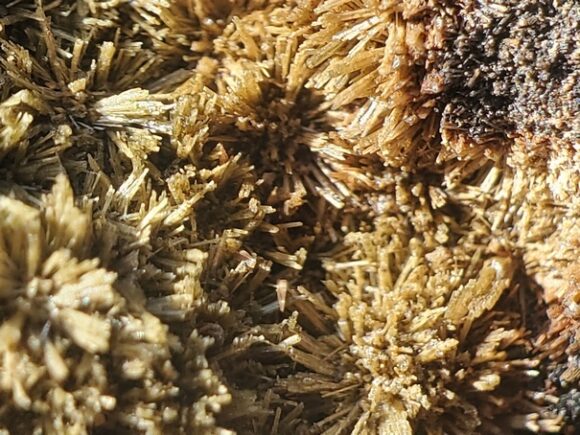













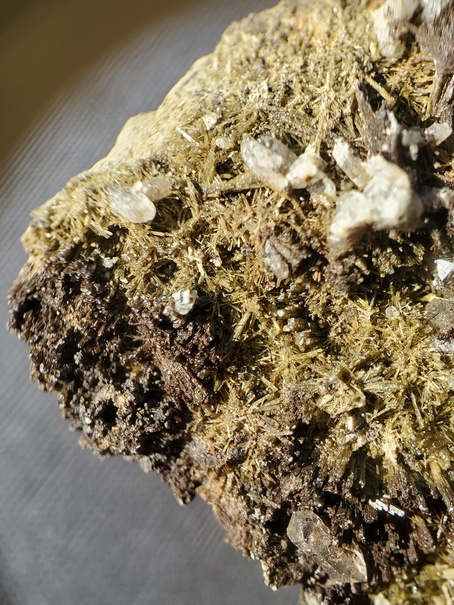
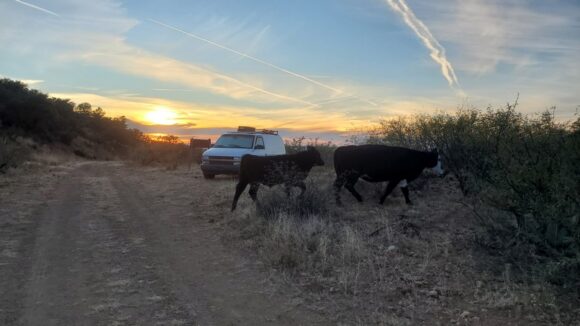








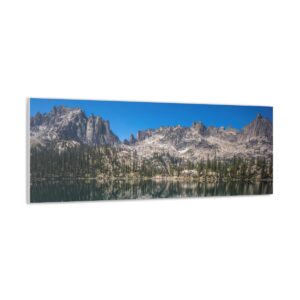





Leave a Reply